#African Continental Culture
Text
MAKE YOUR RESTAURANT POPULAR ACROSS EUROPE
Do you want your restaurant to be popular throughout Europe? Call us now! +32 470 48 20 58.
africadigital.eu
#African cuisine#Ethnic dining#Afro-inspired dishes#Traditional recipes#Authentic flavors#Exotic spices#Cultural dining#Afro-Caribbean food#Continental cuisine#Pan-African dishes#International flavors#Exotic meats#Unique dining experience#Fusion cuisine#African-inspired menu#Global cuisine#Traditional cooking#Gourmet African dishes#Savory delicacies#Specialty restaurant#food
0 notes
Text
*sigh* Featurism...

So, I woke up to this shit on the Twit app and I've only hit on this issue before, but today I'm digging in.
Colorism is something that is not addressed often enough, but intersected within that and even more rarely spoken about, is the issue of featurism.
The young actress above just got cast as Juliet in the latest big staged prestige production of Romeo and Juliet, opposite Tom Holland. And as usual the blue-checks, everybody else including "black", and even Black regulars are all-in on the cruelty.
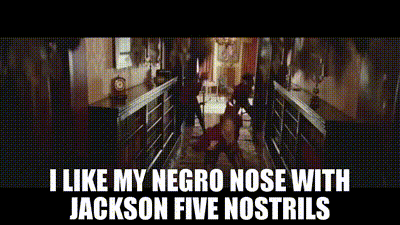
...But I want to breakdown a nuance that is too often skipped over when this happens. The two people named with her, give away the featurism game, here; a particularly nasty form of often internalized racism.
I guarantee if the young actress looked like this?

She'd definitely still get racist attacks, but the particularly nasty shit I'm seeing attacking her looks wouldn't come. In fact, I could see some people thinking they are defending her with "but she's pretty!" or more specific... "obviously she's mixed" comments.
-Something pretty much every Black woman with features that don't align with a narrow perception of blackness hear often (and we'll get to why I specified women in a minute).
And don't get it twisted...
These aren't exclusively nor standard white features either (see: the many ethnic features w/in white ethnic groups that also get hit to a lesser and non-racialized degree such as large "hook" and/or Romanesque noses for example, which is definitely about anti-semitism, anti-Romani sentiment, and other disparaged/discriminated against ethnic minorities in Europe) and yes, blue eyes are naturally occurring within non-mixed and dark-skinned Black people due to a mutation called Waardenburg syndrome.
But there is a REASON why fetishizing even certain ethnic features within the African continental diaspora has been a thing for a long time...i.e. "the dopest Ethiopian" from the Tribe Called Quest lyric is pictured as this:
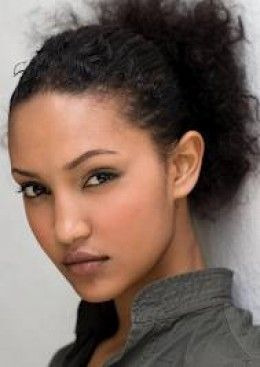
and this:

and not this:
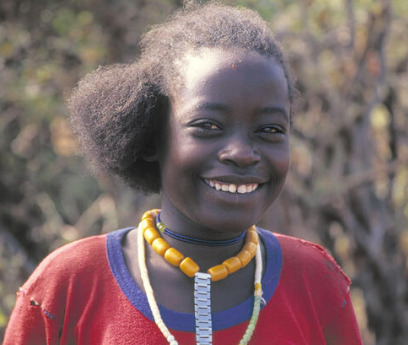
...despite them all being Ethiopians of various tribal ethnicities.
A wide-nose, a tighter curl, coil, or zig-zag pattern of hair, fuller lips and often, but not always (because I've given examples above where features "mitigate" skin color) darker skin.
Zendaya is grouped with Tracey and Francesca Amewudah-Rivers, despite being both lighter in skin color and having a Black parent and a white parent because her nose isn't what has become the standard surgical look...that too many celebs have.
This includes the ones who got so-called "ethnic" work or just a slight 'refinement'. No, her nose is born w/it, made for that good African air, as I call it. Nostrils prominent, nose bridge wide:
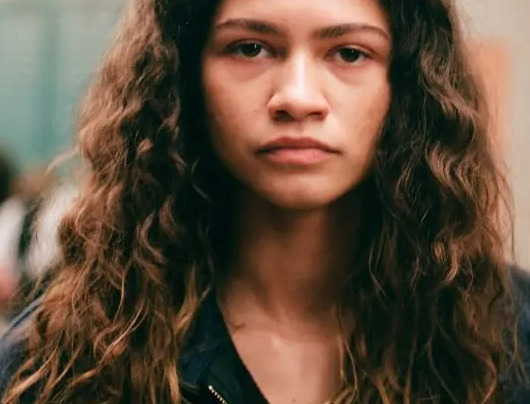
I went make-up free as well, because even make-up practices these days, go for that narrowing highlight technique i.e. just below it's subtle.

Sza is a an example of it taken to extremes, even with the Hollywood standard "ethnic" refinement she did get.

The thing is... I don't blame or attack her for that. Because you see above that is just a taste of what happens.
Lil' Kim was relentlessly bullied by the men in her life for her ethnic features for her whole life...and that is why she is off-limits to this day for me when it comes to all the work she's had done.
...And this is where I explain why I specified men being mostly exempt. It's because "Blackness" including all the physical features associated with it, is by default masculinized.
...Which is why Idris Elba is considered one of the most handsome men in the world, w/o the caveats that even Lupita Nyong'o often gets.
Nobody calls Samuel L. Jackson ugly. He is even idolized and fetishized by a specifically white male gaze for how culturally "Black" he is perceived to be for all the wrong reasons, his signature "motherfucka" for example (and I could go off on a whole other tangent here, but digressing).
All this to say... Featurism sucks. It's not talked about enough.
Blackness in all variations is Beautiful.
Tracy Chapman looking as young she does?? Hell, mark it down to both her dark skin (a natural UV protector) and not messing with her given features (and being a lesbian, men will age you. lol -I got jokes-):

P.S. THANK GOODNESS for Tems and her rising prominence as a beauty as well:


P.P.S. Even Jay-Z the billionaire rapper has had the comments over the years about his lips and nose, hence that lyric in Beyonce's Formation.
#featurism#I only just scratched the surface#but man this shit needed to be scratched#colorism#racism#meta#tom holland#romeo and juliet#tracy chapman#lil kim#tems#jay z#sza#zendaya#francesca amewudah-rivers#francesca amewudah rivers
248 notes
·
View notes
Text
With white actors, their stereotypes are clear satire, while their authentic portrayals of accents are taken seriously—African accents are not afforded that luxury. Part of the authenticity and grit we’ve come to love in Good Will Hunting (1997) owes to the fact that both Matt Damon and Ben Affleck speak in accents native to South Boston—which successfully shows the importance of class distinctions, Will’s intellectual ability despite his “rough” surroundings, and rooting him in his neighborhood and background even as he progresses to new places and opportunities. Part of the joy of watching Mary Poppins (1964), is the grating sound of Dick Van Dyke’s bizarre “Cockney” accent. Often noted as one of the worst accents in film history, Van Dyke’s character sounded like he came from New Jersey, Australia, but Poppins is a children’s comfort film filled with magic, so audiences are already prepared to suspend their disbelief. Language, voice, and tone are vital parts of storytelling, but somehow caricature-like portrayals of African accents still manage to win Oscars, while Dick Van Dyke’s “Cockney” failure is an actor’s cautionary tale.
This speaks to a larger issue: the hierarchy of occidental languages over languages from the global south, the (lack of) knowledge of African dialects, and a general laziness toward the research required to thoughtfully and effectively learn regional African accents. Alongside my research for this article, I also spoke to Djeneba Bagayoko, a linguist who specializes in African languages and is currently working on a book exploring the similarities in Ebonics and continental languages. When we discussed Beasts of No Nation—no nation indeed, as the film is set in an “unspecified” West African country—Djeneba pointed out the prevalence of guttural sounds and line delivery in a lower vocal pitch.
While having a lower-pitched voice is completely within the rights of directors and actors to be a stylistic choice for a character, its unfortunate prevalence goes beyond artistic prerogative and seems closer to laziness or ignorance. Viola Davis’s accent in The Woman King is also delivered in a lower register, with an emphasis on guttural sounds and a sprinkling of that American English rhotic R that would not be present in a West African accent during the 1820s. Winston Duke’s accent in Black Panther (2018) also features guttural sounds, a low pitch, and even Nigerian facets of speech (adding “o” as a standalone sound at the end of sentences), despite the fact that the fictional nation of Wakanda is supposedly located in southeast Africa. Bagayoko rightly asked, “Why, when it comes to Africa, are we all lumped together?” Reducing Western and Southern African accents down to hard, low-pitched noises positioned at the back of the throat perpetuates the idea that African languages are too “other” for any attention to detail. The frequency with which we see this technique reiterates the view of Africans as homogenized and underdeveloped—a colonial perspective.
114 notes
·
View notes
Text
Black Femininity.
Let’s talk Black femininity: a hidden gem that seems to be within blurred lines.
Disclaimer: For me to “investigate” black femininity properly, I have chosen several beautiful black women who sport natural hairstyles/protective styles, natural bodied, and has a creative essence that envelopes them. These women are glamourous, soulful, eclectic, and beautifully flawed. This makes them no different than you and I. Finding the unique in our natural beauty, and those that sets us apart. Quite frankly, this, to me, seems as if it’s the root and/or epitome of the beauty around the world. The golden standard amongst most.
Hello to you my glamourous ladies!
This discussion will be about something I’ve recently found interesting. So apparently, in today’s society (or to specify, the male-i-sphere), there is a discussion about the level of femininity that black women have in contrast to other races/ ethnicities of women. Now, I’ve spoken about submission (a biblical concept) in a worldly discussion and like always, it’s taken out of context. Or in other words perverted, like the devil does everything God creates. The world has been speaking down on black women for seems like forever but my issue is with black women.
I find it really disheartening to see you accept this notion, let it sink into your mind, and become subservient to it. This is not us! We are the epitome of femininity and the origin of humans. Show some dignity, ladies (ouch, but needed to be said)! Believe me, I become furious when I hear what everyone says about us too, but we CANNOT, for the life of us, ingrain everything someone says about us.
HOWEVER…
Lets get something CRYSTAL clear…
FEMININITY IS NOT INHERETLY EUROCENTRIC.
FEMININITY IS NOT STARIGHT OR CURLY WIGS.
FEMININITY IS NOT DRESSING A CERTAIN WAY.
FEMININITY IS NOT SPEAKING SOFTLY OR A HIGH PITCHED VOICE.
FEMININITY IS NOT WEARING PINK AT ALL TIMES.
FEMININITY IS NOT APPEARING WEAK.
FEMININITY IS NOT APPEALING TO THE MALE GAZE.
FEMININITY IS NOT IN COMPETITION WITH OTHER WOMEN WHO ACT/LOOK DIFFERENT THAN YOU.
FEMININITY IS NOT ACTING ALL GIDDY AND BUBBLY AROUND MEN.
FEMININITY IS NOT BEING AN AIRHEAD SO THAT MEN CAN DO THINGS FOR YOU.
FEMININITY IS INNATE IN WOMEN ONLY!
If you as a women thing all these things are false, I got some bad news for you…
Black Women this is a wakeup call to realize that there is femininity in our own culture. There is femininity in our own hair. There is femininity in our own traditions. There is femininity in our own history. I hate to see black women who change or “tweak” themselves to appear more feminine (which they assume is the appearance of European women). Why do you think that femininity is inherently European? Why do you think that you have to wear your hair a certain way or talk a certain way to be feminine? Are you not enough already, as a Women?
To me, this just sound like racist talking points regurgitated, twisted, tweaked, flipped, reversed, and spinned again. Why are you so comfortable portraying yourself this way for the sake of acceptable “femininity”? Why are you so comfortable telling the black female youth this madness? Who told you that femininity was a look? Don’t worry Ill wait…
This may hurt but darlings we must be honest with ourselves. If we like this “aesthetic” then cool but who lied to you and said that femininity is based off Eurocentric standards?
Here’s the truth: FEMININITY LOOKS DIFFERENT FOR EVERY ETHNIC GROUP.
How does Latinx femininity look? Polynesian? Asian? Middle Eastern? Continental African?
So why on earth are you so adamant on accepting your own femininity and embracing its uniqueness? I don’t blame you though because I’ve been there. I thought the same as you. I felt how you’ve felt. This has been ingrained in our minds since childhood. But were furthering it at this point.
Let’s look at some of my favorite examples of what Black femininity looks like.
Thoughts?




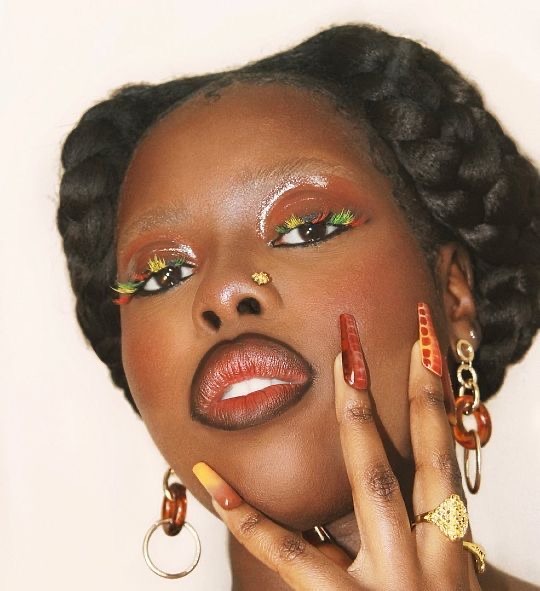

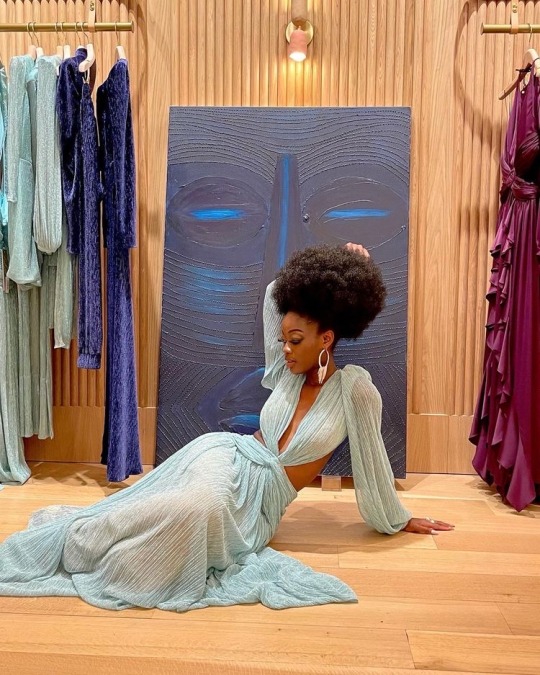

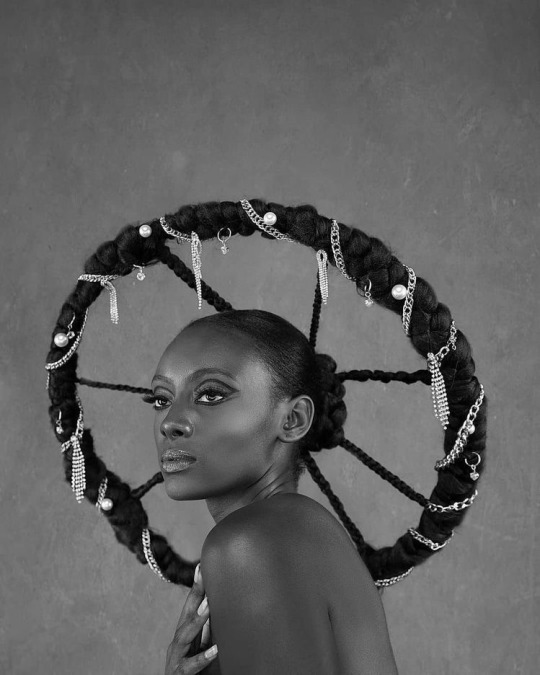


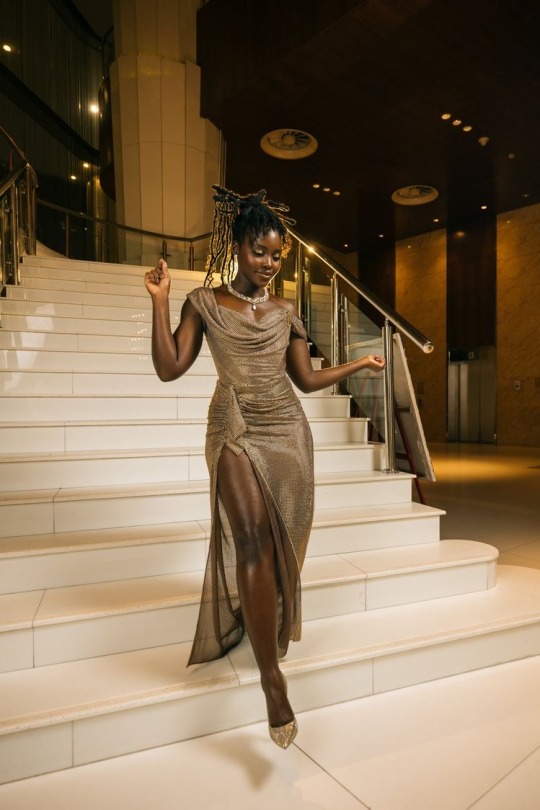
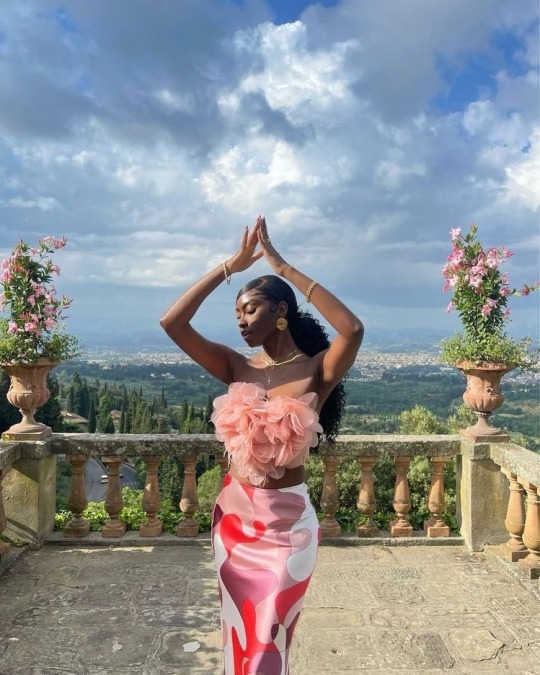


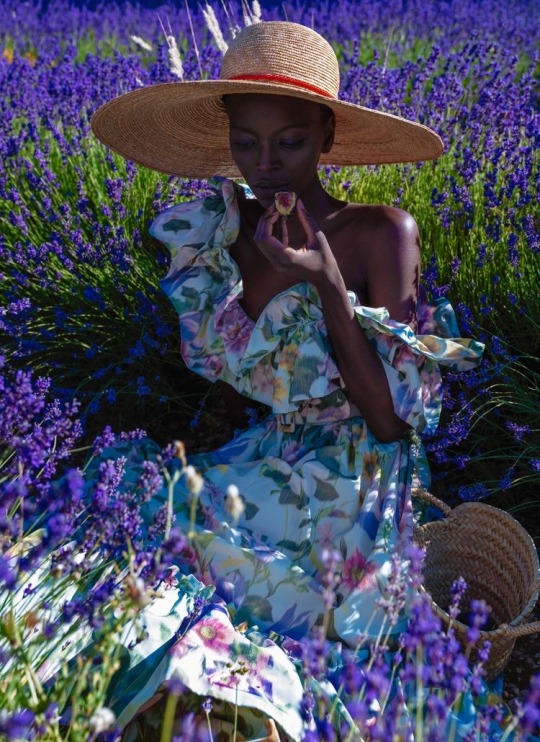


#blackgirlmagic#bougie black girl#black women in femininity#luxury black women#rich black women#black hypergamy#black women in leisure#black woman femininity#that girl#soft black women#black womanhood#bougie#rich girl#luxury aesthetic
73 notes
·
View notes
Photo

𝗜𝗥𝗔 𝗔𝗟𝗗𝗥𝗜𝗗𝗚𝗘 (1807-1867)
𝗜𝗿𝗮 𝗙𝗿𝗲𝗱𝗲𝗿𝗶𝗰𝗸 𝗔𝗹𝗱𝗿𝗶𝗱𝗴𝗲 𝘄𝗮𝘀 𝘁𝗵𝗲 𝗳𝗶𝗿𝘀𝘁 𝗔𝗳𝗿𝗶𝗰𝗮𝗻 𝗔𝗺𝗲𝗿𝗶𝗰𝗮𝗻 𝗮𝗰𝘁𝗼𝗿 𝘁𝗼 𝗮𝗰𝗵𝗶𝗲𝘃𝗲 𝘀𝘂𝗰𝗰𝗲𝘀𝘀 𝗼𝗻 𝘁𝗵𝗲 𝗶𝗻𝘁𝗲𝗿𝗻𝗮𝘁𝗶𝗼𝗻𝗮𝗹 𝘀𝘁𝗮𝗴𝗲. 𝗛𝗲 𝗮𝗹𝘀𝗼 𝗽𝘂𝘀𝗵𝗲𝗱 𝘀𝗼𝗰𝗶𝗮𝗹 𝗯𝗼𝘂𝗻𝗱𝗮𝗿𝗶𝗲𝘀 𝗯𝘆 𝗽𝗹𝗮𝘆𝗶𝗻𝗴 𝗼𝗽𝗽𝗼𝘀𝗶𝘁𝗲 𝘄𝗵𝗶𝘁𝗲 𝗮𝗰𝘁𝗿𝗲𝘀𝘀𝗲𝘀 𝗶𝗻 𝗘𝗻𝗴𝗹𝗮𝗻𝗱 𝗮𝗻𝗱 𝗯𝗲𝗰𝗼𝗺𝗶𝗻𝗴 𝗸𝗻𝗼𝘄𝗻 𝗮𝘀 𝘁𝗵𝗲 𝗽𝗿𝗲𝗲𝗺𝗶𝗻𝗲𝗻𝘁 𝗦𝗵𝗮𝗸𝗲𝘀𝗽𝗲𝗮𝗿𝗲𝗮𝗻 𝗮𝗰𝘁𝗼𝗿 𝗮𝗻𝗱 𝘁𝗿𝗮𝗴𝗲𝗱𝗶𝗮𝗻 𝗼𝗳 𝘁𝗵𝗲 19𝘁𝗵 𝗖𝗲𝗻𝘁𝘂𝗿𝘆.
Ira Frederick Aldridge was born in New York City, New York on July 24, 1807 to free African Reverend Daniel and Lurona Aldridge. Although his parents encouraged him to become a pastor, he studied classical education at the African Free School in New York where he was first exposed to the performance arts. While there he became impressed with acting and by age 15 was associating with professional black actors in the city. They encouraged Aldridge to join the prestigious African Grove Theatre, an all-African theatre troupe founded by William Henry Brown and James Hewlett in 1821. He apprenticed under Hewlett, the first African American Shakespearean actor. Though Aldridge was gainfully employed as an actor in the 1820s, he felt that the United States was not a hospitable place for theatrical performers. Many whites resented the claim to cultural equality that they saw in African performances of Shakespeare and other European-authored texts. Realizing this, Aldridge emigrated to Europe in 1824 as the valet for British-American actor James William Wallack.
Aldridge eventually moved to Glasgow, Scotland and began studies at the University of Glasgow, where he enhanced his voice and dramatic skills in theatre. He moved to England and made his debut in London in 1825 as Othello at the Theatre Royal Covent Garden, a role he would remain associated with until his death. The critic reviews gave Aldridge the name Roscius (the celebrated Roman actor of tragedy and comedy). Aldridge embraced it and began using the stage name “The African Roscius.” He even created the myth that he was the descendant of a Senegalese Prince whose family was forced to escape to the United States to save their lives. This deception erased Aldridge’s American upbringing and cast him as an exotic and almost magical being.
Throughout the mid-1820s to 1860 Ira Aldridge slowly forged a remarkable career. He performed in London, Liverpool, Edinburgh, Bath, and Bristol in King Lear, Othello, Macbeth, and The Merchant of Venice. He also freely adapted classical plays, changing characters, eliminating scenes and installing new ones, even from other plays. In 1852 he embarked on a series of continental tours that intermittently would last until the end of his life. He performed his full repertoire in Prussia, Germany, Austria, Switzerland, Hungary, and Poland. Some of the honors he received include the Prussian Gold Medal for Arts and Sciences from King Frederick, the Golden Cross of Leopold from the Czar of Russia, and the Maltese Cross from Berne, Switzerland.
Aldridge died on August 7, 1867 while on tour in Lodz, Poland. He was 60 at the time of his death. Aldridge had been married twice and left behind several children including a daughter named Luranah who would, in her own right, go on to become a well-known actress and opera singer. There is a memorial plaque at the Royal Shakespeare Theatre in Stafford-upon-Avon, in honor of his contributions to the performing arts. In 2014 a second plaque was unveiled in Lodz, Poland to honor his memory and legacy
#african#african american#kemetic dreams#brown skin#senegalese#ira aldridge#shakespeare#othello#macbeth#venice
143 notes
·
View notes
Text
Okay well I watched the first episode of Blood Origin and honestly my thoughts are:
I just don't understand why people are so resistant to changes/new plotlines/some lore breaking of *recent* franchises but gobble it up when it's older. People telling an untold portion of a common tale is well established in storytelling culture. The first example that springs to mind is Lancelot, who straight up does not exist in original Authorian legend and was a FRENCH invention when the myth spread. Nowadays, most casual enjoyers of King Author stuff don't bat an eye to Lancelot's presence. Lancelot, who comes to mind, because Sapkowski writes said Lancelot to be in love with Ciri, and we're totally cool with *that* but not with changes to Sapkowski's work.
It's really telling that there's such a bigoted negative reaction to this because honestly? The black people so far have been BLACK black, darker than me, darker than even my black family sometimes. I'm enjoying seeing melanin in fantasy don't mind me. And the hair on the sisters is excellent, I'm liking the costuming, and I *really* like Eile.
The accents are kind of all over the place. Both as individual characters but also as the actors themselves. Sometimes Fjall goes from generic American accent to some form of fake Irish to ????european???? and back and it's distracting and weird. HOWEVER I do like the Irish and Welsh accents in high born kingdoms, because too often those accents are for commoners and poverty only, and this sort of turns the trope on its head.
I'm not sure how much I like the pan-Asian vibe I'm getting from some of the props and architecture. Some things look vaguely Chinese while others solidly Arabic while others a weird fusion of Indian and Korean and it's just odd to me. At first I thought it was because of clan structures but then I saw that it's just sort of everywhere. I have 0% Asian in me so I'm not really a good authority to speak on it but it's a weird vibe, a little Orientalist to my eyes. I'll freely admit that I like the aesthetic since I was raised pretty pan-African but I recognize that most continentally grouped cultures don't love that and it's mainly the black diaspora that's embraced it because we don't really have much of a choice.
I STILL feel that doing away with this short-season "but the episodes are an hour long!" nonsense would help pacing so much. Literally every time I thought the episode was going to come to an end, it's been roughly at the 20-25 min mark, which a standard TV episode would have been ANYWAY. So there's not really much point to having this be 4 hour-long episodes when it could be done better as 12-15 20 minute episodes... which would be the eqivilant of a short season while 24-32 is a more "standard" season (instead of 8 hour-long episodes). It gives you more time to flesh the characters and plotlines out while also allowing you the chance to trim some of the long-and-boring content people get tired of watching.
I really do feel bitter that the witcher tags continue to be people making racist and misogynistic memes instead of a fandom happily discussing a pretty strong first episode that introduced a billion fantasy characters of color. It really sucks that black people in fantasy is received so poorly when my inner 10 year old is happy to see people who look more like me having fun with the genre. I long for the day when I can exist in a fandom space and happily discuss my favorite black characters without having to justify their existence every 2 seconds.
Oof that CGI is pretty rough though. Which surprises me because the S2 CGI was not this rough so idk what happened here. That monster in the first episode is, uh, bad. And the background in the weird magicky place is also pretty, uh, bad.
I don't understand why the first witcher being an elf would piss Geralt off except maybe because that means Jaskier knows more about witchers than Geralt does? All of Geralt's iterations- the books, the games, the show, the comics- are pretty chill with elves as long as they're pretty chill with him. He only pursues certain elves and elf-blooded mixed race people when they pose a direct threat to him or his loved ones. Same as humans. So I don't really get that line at all unless, as said, it was more a "wow Geralt's gunna be pissed that I know this story and he doesn't"
56 notes
·
View notes
Text
Significantly for a book that excavates a history that has been received with shock and scandal to many of its readers, one of the most powerful senses that Ebony and Ivy conveys is the banality of slavery to the university and the social worlds that it was so crucial in maintaining. Colleges extended the normalizing reach of slavery, acclimating (and placing on equal footing) those students who arrived with no first-hand experience of slavery with those students whose lives were directly enmeshed with it, holding slaves in their person or family. Colleges also reproduced slavery to the extent that they served as pivotal sites in the production, legitimation, and dissemination of dominant ideas for emerging generations of the colonial elite. Study thereby became a vehicle for the enshrinement of emerging knowledges in the form of time-honored wisdom. he book’s final three chapters detail the practical operations by which the university’s accumulation and formalization of racial knowledge took shape in “the rise of scientific racism” (190). Academic institutions became the site of the alchemical transformation of highly biased and interested observers of African and Indigenous populations into legitimate knowledge: “Atlantic colleges took these myriad pieces of social information and forged ‘truths’ about human difference”.
Ebony and Ivy, in order to capture its subject, has to defamiliarize its reader with what the nature of a university is. In the colonial Americas, Wilder writes, “colleges were imperial instruments akin to armories and forts, a part of the colonial garrison with the specific responsibilities to train ministers and missionaries, convert indigenous peoples and soften cultural resistance, and extend European rule over foreign nations”. The communities and public trusts colleges served were social formations avowedly in step with the domination of Native nations; they too were specific articulations of the “public” that saw to it that slavery and racial formation operate not only to the well-being of individual owners, but to their collective benefit. Wilder’s study of the university employs a strategy that reads the university as an institution in the making. Colonial-era land grants and leases for colleges enabled their officials “to tap into the wealth being generated in the unfree agricultural economies”. Higher education in this context functioned as a key technology not only of the elaboration and extension of colonial rule in the Americas, but moreover in the construction of intercolonial relations between different settler outposts in the continental Americas and the Caribbean, as well as between the northern and southern English colonies. Entire institutions in the colonial North came to flourish by recruiting students from the plantation-owning elite in the South and the West Indies.
The division of university labor that took shape between the functions of the production of education and the reproduction of the immediate institutional conditions that made education possible corresponded to differential degrees of access to and expulsion from the category of the human. Wilder gets at the problem that the university itself must be socially reproduced even as it is positioned as a key instrument of social reproduction for capital and the nation-state. In so doing, his work allows us to glimpse a version of the university freed from the methodological injunction to view the institution in terms of continuous enlightenment and knowledge production in an abstract or distanced way. he focus on slavery does more than simply scandalize the historicity of the institution. Rather, it opens onto the question of what study itself leaves unthought— what are the social organizations of work and stratifications of humanity necessary to make the work of study possible? Of the many lessons that Ebony and Ivy teaches, one in particular is worth stressing within [Critical University Studies] at present: that there is no history of the university that is not also a history of capital accumulation and capital expropriation. The vaunted university systems of the United States did not simply import their structural models from Oxford and the great German state universities. Their mode of sustaining themselves was derived from and inventive of practices and structures of violence and captivity indissociable from the fact of their genesis as slaveholding settler institutions. Education is not reducible to simple instruction. It is a context constituted as much by students and instructors as it is by those who cleared furnace ashes and emptied chamber pots, by those whose communities were removed for campuses to take root, and by those whose bodies were used as the raw materials for scientific experimentation and discursive elaboration alike.
— Abigail Boggs and Nick Mitchell, "Critical University Studies and the Crisis Consensus", Feminist Studies 44, no. 2., 2018.
12 notes
·
View notes
Video
youtube
sbA kmtyw - "Towards Pan-Afrikan Economics" Trailer
sbA kmtyw - "Towards Pan-Afrikan Economics" with Ambakisye Dukuzumurenyi, Ph.D. will be a weekly one-hour podcast | video that discusses and analyzes pertinent economic news of continental Afrika and the Afrikan Diaspora from a Pan-Afrikan perspective as seen through the lens of Maat in the spirit of Martin Delany, Edward Wilmot Blyden, Henry Sylvester Williams, Marcus Garvey, W. E. B. Dubois, Kwame Nkrumah, Ahmed Sekou Toure, Patrice Lumumba, Julius Nyerere, Malcolm X, Frantz Fanon, Walter Rodney, Amilcar Cabral, Thomas Sankara and Cheikh Anta Diop.
Topics discussed will include but will not be limited to national economic self-reliance, wages, employment and unemployment, entrepreneurship, debt, interest rates, balance of payment, prices, profit, foreign exchange, credit, economic growth, sustainable agriculture, land tenure, land reform, neoliberal economics, social democracy, paths to economic development, corruption, illicit financial flows and alternative economics.
On the show we will take complex economic issues drawn from the mainstream and independent news outlets of the countries of Africa, Europe, Asia and the Americas and through cultural, historical and political contextualization make them comprehensible to the audience regardless of their economic background, empowering the listener to analyze their personal economic situation in relation to the national and international political economy.
Special shows will also be designed around the particular economic questions and concerns of the listeners. Our specialty is in utilizing a multidisciplinary inquiry based Pan-African analytical perspective drawing concepts, ideas and theories from the disciplines of Africana Studies, Cultural Anthropology, Political Anthropology, History, Psychology, Sociology, Philosophy, Geography, Linguistics, Political Science, and Economics. The use of this methodology serves to broaden the discussion and analysis and center it within the African subjective historical experience.
6 notes
·
View notes
Text
A Raisin in the Sun is a story about time. Lorraine Hansberry examines tradition, innovation, and assimilation through the intergenerational divide of the Younger family. Each member of the family has (and represents) a different perspective on the culture, heritage, and direction of the African American Diaspora. Mama still remembers her unfulfilled “dreams” that she and Big Walter hoped her children will “make worthwhile,” but it isn’t clear that they will. A Raisin in the Sun is not the story of a woman who has “deferred” her own “dream”. I posit that Mama’s dream was deferred by her children when they replaced it with new dreams.
By “dream,” I mean one of a person’s most cherished aspirations. Mama and Big Walter dreamed about “not being lynched and getting to the North… [with] a pinch of dignity”. But more than that, Mama dreamed about “buying [a] house and fixing it all up and making… a little garden in the back”. Their dreams were about survival, dignity, and family. These dreams are closely related to their Christian African American culture. When she describes her views on abortion, which are clearly in tune with her faith, Mama says “we a people who give children life, not who destroys them”. She specifically associates her values with her notion of a “people,” by which she means not only her family, but also their race, community, and heritage. They are African Americans, distinct both from white Americans and continental Africans. Mama views history as a slow, but relentless progression of the rights of her people. She expects children will be “the fruit of her days,” and follow the example she and Big Walter set. As she tells Walter, “I’m waiting to see you stand up and look like your daddy…”. She correctly believes her children have opportunities that she did not. However, Mama is mistaken when she assumes that her children will make the same choices that she would have made if she had those opportunities. Her children interact with other cultures, religious ideas, and social circles. The result is that they have developed their own worldviews and their own dreams. Mama wants a house. Walter’s dream stands in the way.
Walter’s dream is financial prosperity—money “is life” in his mind, and he believes in no limits to ambition, not even the limits of morality. As he tells his distraught mother, “there ain’t nothing but taking in this world,” and Walter is determined to take as much as he can get his hands on. He wants “to hang some real pearls ‘round [his] wife’s neck”. While Walter vehemently proclaims hedonistic nihilism, the belief that nothing matters other than pleasure, Beneatha assures her mother that her new worldview—atheism—is in line with order and morality. Beneatha stresses that she is “not going out and be [sic] immoral or commit crimes” because she has turned her back on Christianity. Beneatha dreams of achieving human greatness. “There is only man,” Beneatha proclaims, “and it is he who makes miracles”. She wants to become a doctor and participate in the miracle of healing, which she regards as “the most marvelous thing in the world”.
You can read the rest on Substack
10 notes
·
View notes
Text
Shango's Thoughts:
We Have Allowed These People To Lead Us Down The Wrong Path.
When we say The Black Woman is a Goddess, it's not just to boost her ego in these modern times.
Rather, it is a truth that has been lost to time, at the hands of various Colonizers (mainly Europeans, but also Arabs & some others), who dared step foot in our Holy Land (Africa, NOT the middle east) .
And not just in Ancient Egypt either, that I know the world loves to venerate, but also Northern, Southern, Western & Eastern Africa revered the African Woman.
She was the physical as well as spiritual representation of the seat of power, all over the Continent.
It was only when our Continental people began adopting the nomadic/pastoral ways of our enemies, did the paradigm shift against the African Woman, & Black people as a whole, as well as the environment that we were blessed with. All 3 have suffered immensely.
The link above gives a detailed historical accounting of how we have gone from Greatness to Madness, by becoming out of sync with our Divine Heritage & Nature.
The following are excerpts from the link above. I'm posting them due to their topical relevance, but I heavily encourage everyone to read the entire link at their leisure, as doing so gives the greatest context to the subject, & also because it's a very compelling read.

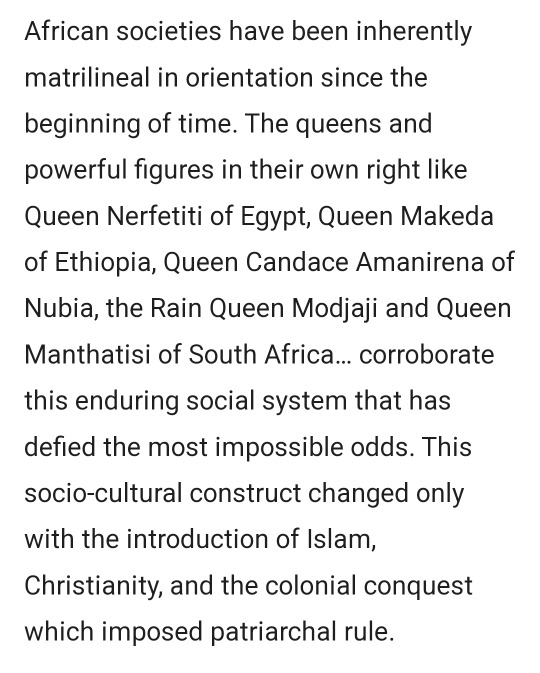

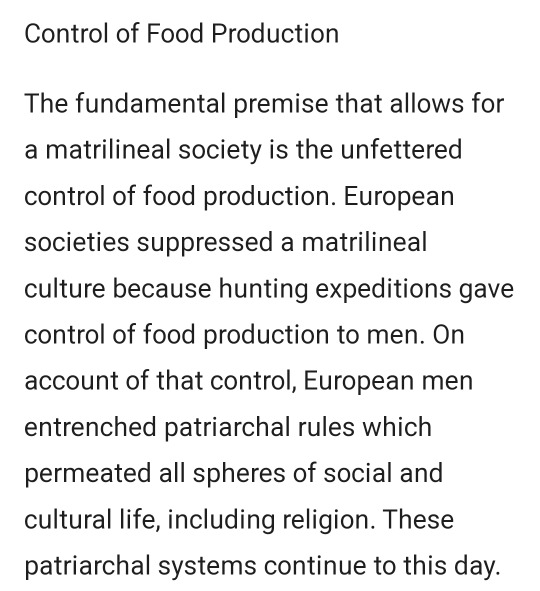
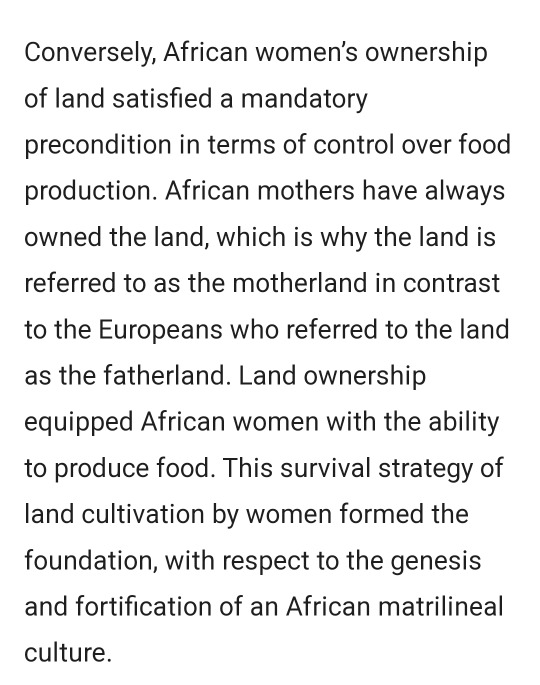
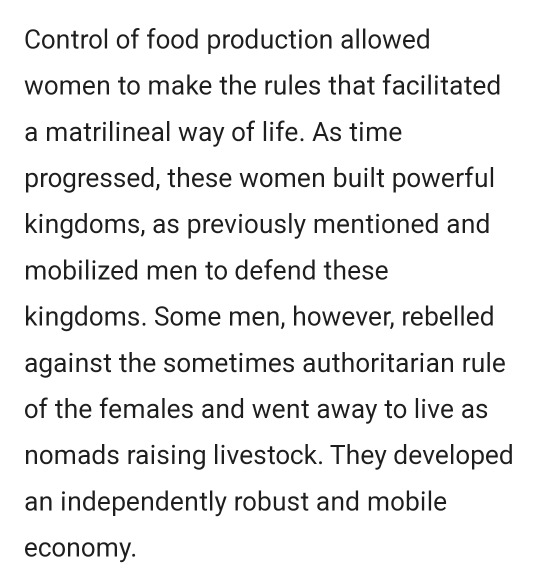
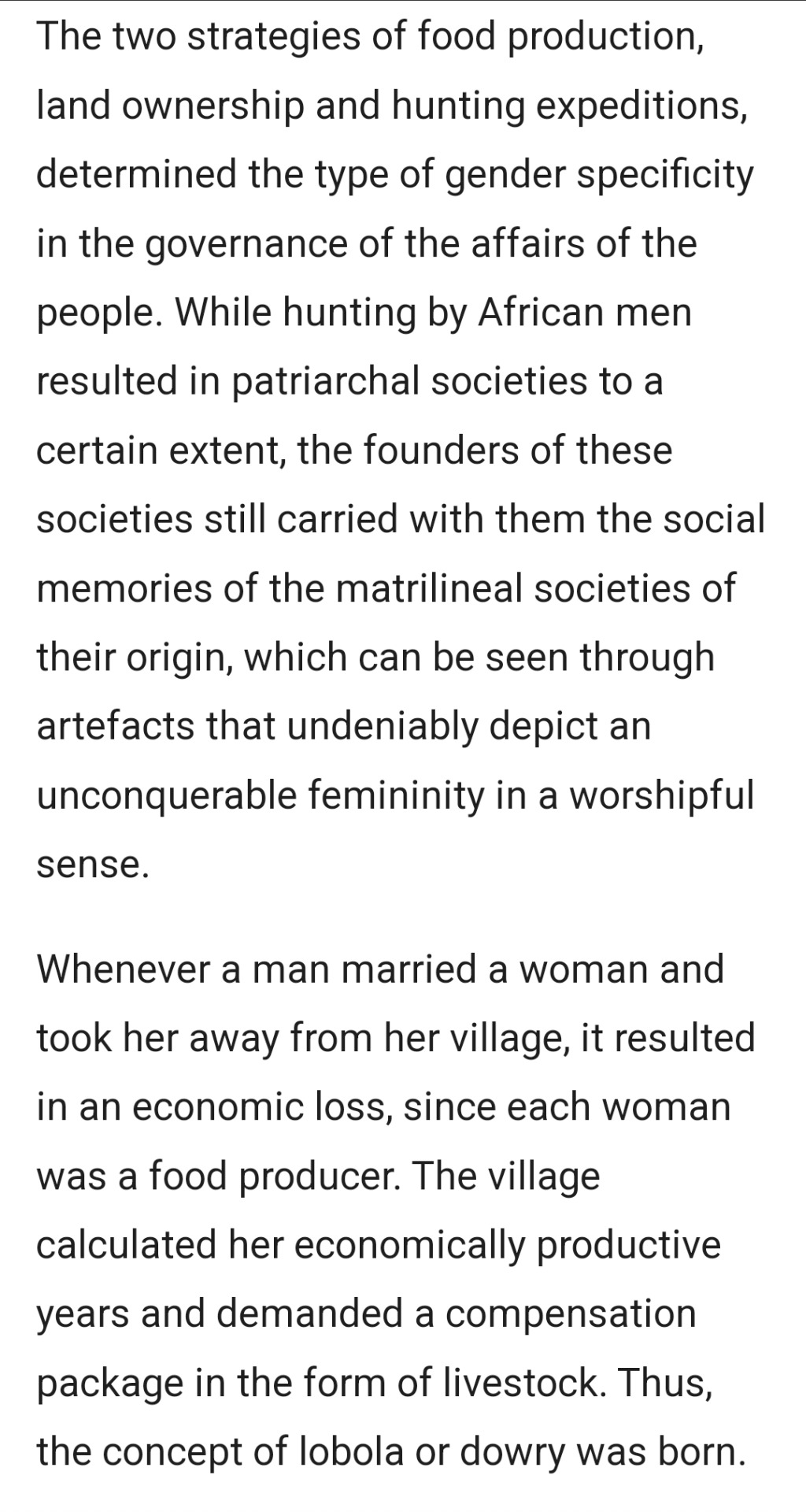
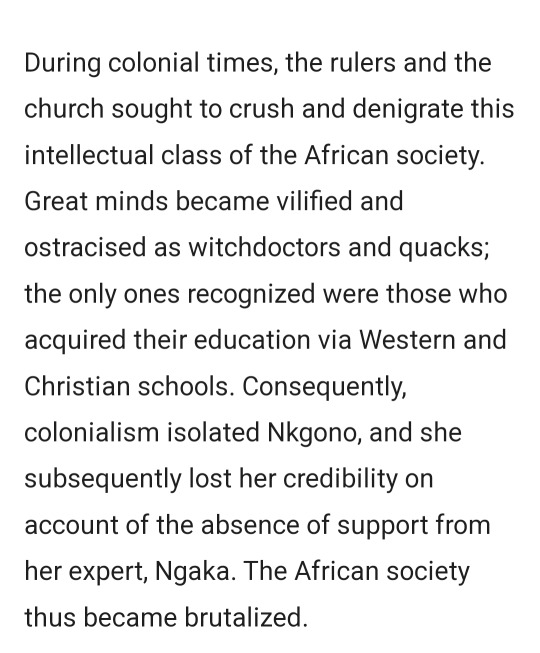
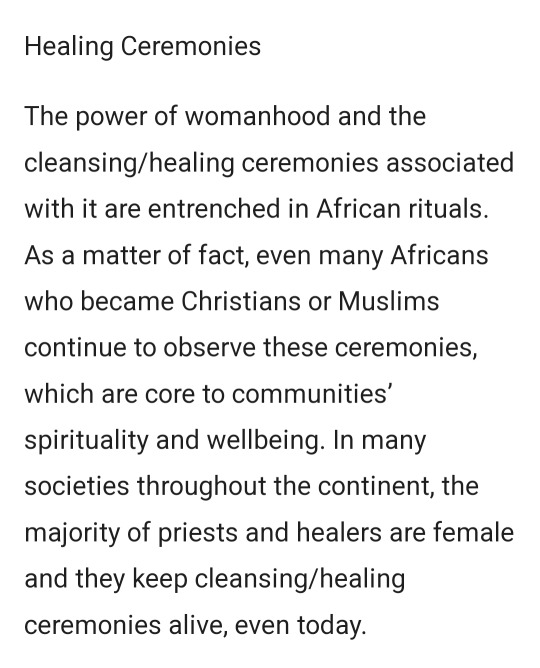
It cannot be understated, just how much we've lost, when we had our heritage stripped from us. Black people globally (both Continental & Diasporan) feel the effects of it, albeit to different degrees of severity.
Having our customs & traditions stripped from us, & having been replaced with those of our oppressors has spiraled us down a hole of madness for the past several hundred years.
We are not in a good place, physically, mentally, spiritually, culturally, emotionally, sexually, psychologically, economically, or socially.
It is only the wholesale return to the traditions we've lost (re: been made to forget), & the complete divorce from customs that our Oppressors forced upon us, that will serve to return us to any semblance of what we once were.
Only then, can the healing truly begin.
Asé 🙏🏿
12 notes
·
View notes
Text
AU FIC IDEA: War Of Two Worlds
Based on my previous 'Lackadaisy in OTL WW2 AU' post, this is basically how I think a piece of fiction in this AU could go. Essentially, it will be episodic between our cast, moving through their arcs and seeing how they interlink with on another as the story goes.
Setting: WW2 but an intelligent feline species live alongside humans. The story goes through the continental United States in 1942 to the Western European front in 1944.
Naming reasoning
1. Human and Feline worlds (may be methaphorical or literal) becoming unexpectedly intertwined as one descends into turmoil.
2. The Lackacats/Felines fighting a war both abroad and at home. Might cover themes of integration and a nod to the experiences of african-american communities serving in WW2 despite racism.
Story Arcs (Basic overview)
Most of these for the cast could be roughly guessed from this post. I don't have much ideas in terms of story beyond Rocky, Freckle, some rough inklings for Ivy, Wick, and Mitzi.
Rocky is a new recruit into a United States Air Force bomber squadron. While this story is not really too special amongst his peers, Rocky is the first feline to join an integrated crew. His arc will involve the bumpy ride of getting used to his new role and comrades, as well as slamming head-on the challenges of being the 'test dummy' for feline integration.
Freckle's arc is mainly composed of two topics: The dynamics of feline units and their human counterparts, misunderstandings and issues of inequality in management; and Freckle struggling with how to deal with relationships with others (including his girlfriend Ivy) in the chaotic circumstances of war.
Ivy brings integration onto the stage of American culture, acting with the support of Mitzi who leads a feline representation movement to increasing support.
Wick's just going to have periodic screentime on managing research on accomodating feline soldiers to huamn-oriented equipment. One idea on the question of cat ears in hepmets, is to have steel tophats with more internal padding and communication equipment depending on the role.
More content on this to come soon. I have a script for the opening for a tv show on this concept.
#lackadaisy#lackadaisy ww2 au#lackadaisy au#rocky rickaby#wick sable#mitzi may#ivy pepper#calvin mcmurray#freckle mcmurray
12 notes
·
View notes
Text

#African cuisine#Ethnic dining#Afro-inspired dishes#Traditional recipes#Authentic flavors#Exotic spices#Cultural dining#Afro-Caribbean food#Continental cuisine#Pan-African dishes#International flavors#Exotic meats#Unique dining experience#Fusion cuisine#African-inspired menu#Global cuisine#Traditional cooking#Gourmet African dishes#Savory delicacies#Specialty restaurant#Cosmetics African African beauty products#Ethnic skincare#Afro-centric cosmetics#Natural hair care#Traditional beauty remedies#Ethnic makeup brands#Afro-textured hair products#Herbal skincare#African-inspired cosmetics#Cultural beauty products
1 note
·
View note
Text
On Greta Danesti...
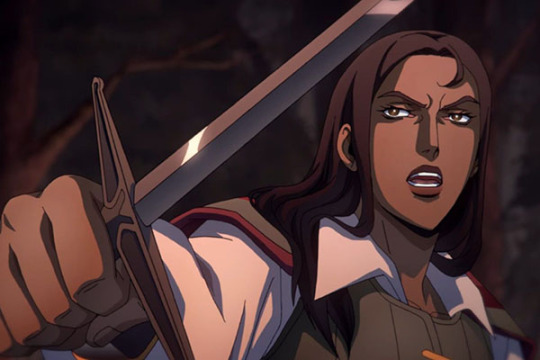
I'm just taking this time to correct a certain anti-Black, (and anti-Romani) sadly typical fandom troll's misogynoir fuckery in the tag and establishing who Greta Danesti is in canon Castlevania animation lore.
This is Greta Danesti's official character sheet:
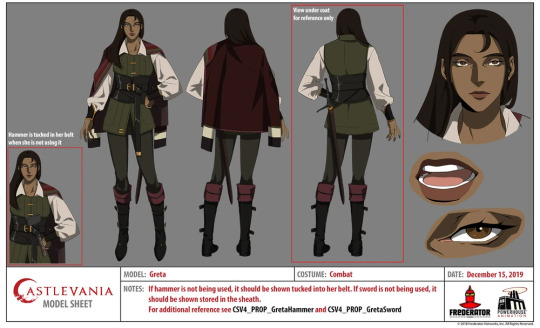
She's the village headwoman of Danesti a few miles away from Alucard's castle.
This is what her voice actress, Marsha Thompson looks like:
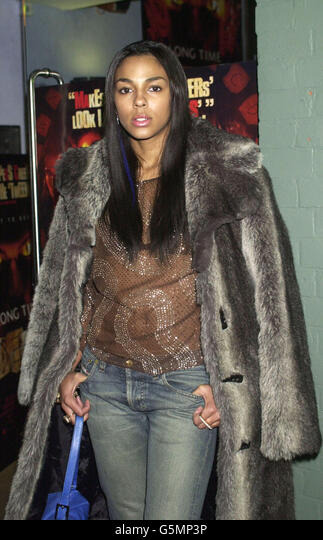
It's pretty obvious her character design took cues from the actress, who is Afro-British.
In show canon, however, her family escaped from the Roman city of Carthage, which today, is located in the African country Tunisia.
Alucard correctly speculated where her people are from while conversing with her, here (s4 e5):
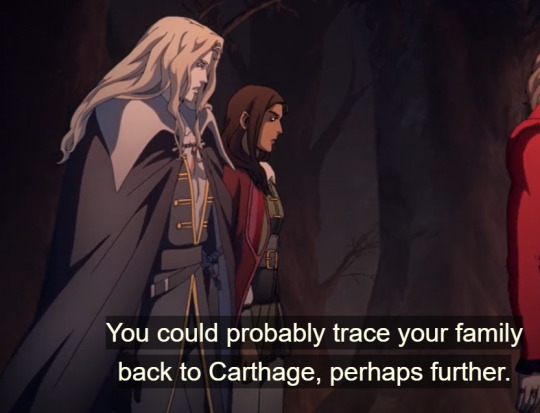
Greta then confirms that her people did escape the Romans, but she now fully embraces her "family" in her village who are "from all over" and the responsibility of taking care of them.
This same troll used the g-slur to insist that she is Romani.
She is not.
This troll used an early character design here, to make her case.:
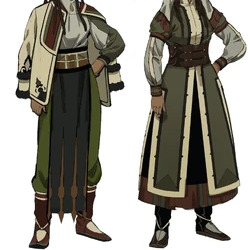
And though it does have similarities to Romani clothing... It also looks like it takes cues from Tunisian clothing and likely local and non-local European clothing of the era with "fantasy" elements sprinkled in, as well, which would match the fact of her village's people coming from all over:

There definitely should be more Romani rep in media as it is so often whitewashed, but Greta is not Romani.
FYI, these women actors actually *are* of Romani descent:
Fairuza Balk of The Craft, Oona Chaplin who played Robb Stark's wife in GOT (she's also Charlie Chaplin's granddaughter[!]), and Noomi Rapace from the Swedish movie, The Girl With The Dragon Tattoo says her father may have been of Romani descent, as well.
And because I can predict it, as people like to find ways of discounting blackness in every way...
Yes, there are plenty of non-Black indigenous POC in North Africa, including within Tunisia.
Another fun fact... Africa has more indigenous human genetic variation among its peoples than every other people on the planet has with everyone else on the planet[!].
All this to say non-white POC AND Black people are indigenous to Tunisia.
I feel I have to say that because there is a lot of anti-Black anthropological fetishization of North Africa. Egypt is a major example of that (see: Rami Malek, an indigenous Coptic Egyptian who self-identifies as African man of color and has likely had to clarify that *often* because people keep wanting to mislabel him as an Arab, but I digress...)
And sadly, there is a decidedly anti-black movement to totally disconnect certain North African countries' identities from a continental African one, and to largely see it as mainly a part of the MENA world (it is both kiddies, BOTH).
Here is an informative article (linked in the image) about that struggle:
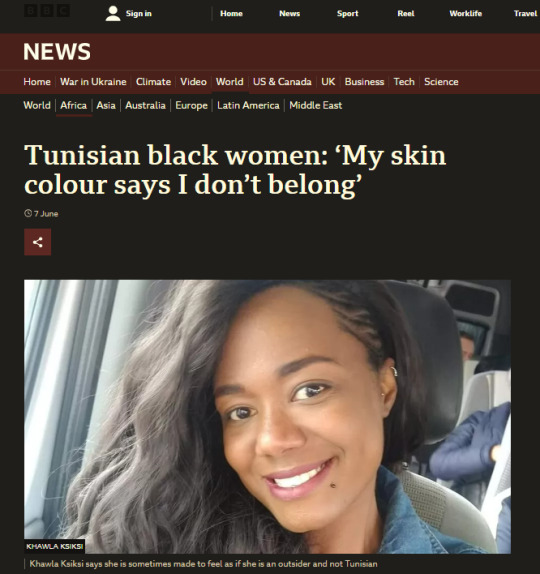
So, this got heavy...but between the post insisting that Greta is NOT Black and the one saying she's not bisexual because that same troll is purposefully and maliciously being obtuse about how words go together...
I figured clearing some things up and educating folks might be helpful.
BTW, the fact of those issues in the article makes her blackness all the more resonant as rep in pop culture.
And hey, poly folks have disagreements, just like the het folks do...
-Still bi.
I'm gonna end here with two images from the linked article of anti-racist Tunisian protesters (MENA and Black):
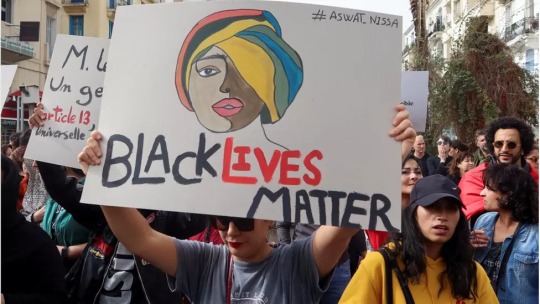
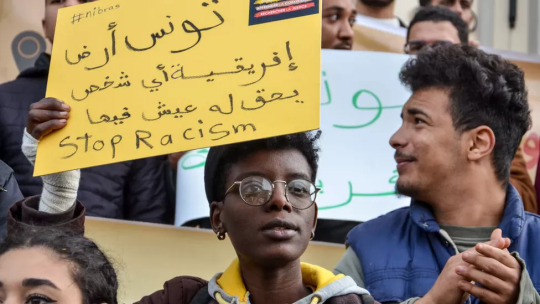
P.S. I also side-eye those keen to make her muscular... I mean yeah she wields a big-ass hammer and shortsword/dagger, but the tendency to masculinize black woman characters deserves a hardy eye-squint.
Especially, given that the show has *no problem* making muscular women look like that and they DIDN'T for Miss Greta.
See: Zamfir and the Berserk-style sword-carrying Vampire warrior, Striga. Both of whom had that flex going on.
#tumblr gonna tumblr#misogynoir#greta danesti#greta x alucard#castlevania#I hate when wrong-ass trolling info is spread in the tumblr fandom tags about black women characters#and sadly it happens A LOT purposefully#if you don't like black women just stick to the characters you like instead...you really gotta put in effort to actively HATE as a hobby#same ole same ole#meta#one kinda hate ALWAYS comes with another#which is why solidarity makes sense#troll is anti-black & biphobic#so this is becoming a thing?#doing my best to make sure the black girl character tags have GOOD info about the characters#first uhura and now greta#sunday wip procrastination blah#block that “gretasworld” troll#btw the producers say she's not a spin-off Grant Dynasty so...that's why he's not mentioned
85 notes
·
View notes
Text
340: Various Artists // Two Tribes

Two Tribes
Various Artists
2019, Agogo (Bandcamp)
A double-LP mixtape/compilation from Hannover electronic label Agogo Records, Two Tribes “makes an effort to give insight in how [sic] musicians living in Europe today incorporate and transfer musical traditions particularly from the African continent into their oeuvre” (per the liner notes). Ostensibly, everyone here is either a musician living in Europe with African roots of some kind, or is a European musician collaborating with Africans, though in some cases what you get is just a Euro DJ using a few “tribal” sounding drum stems.
youtube
I had a lot of fun listening to the most ‘70s sounding funk stuff here and trying to guess how white the musicians were, but I was underprepared for the intensity of unpasteurized Funky Continental Guyness I was exposed to. Winners included guitarist Petri Kautto of Finnish-Beninese Afro-jazz combo Trio Toffa (pretty good), who strongly resembles Bill Nighy wearing a bucket hat with fake dreads attached to it, and Berlin’s slavishly authentic Afro-funk group Onom Agemo and the Disco Jumpers, who look like the S-Bahn Bloodhound Gang.

Petri Kauto of Trio Toffa
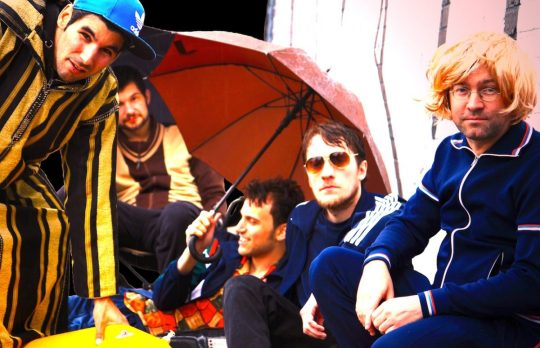
Onom Agemo and the Disco Jumpers
The compilation has what strikes me as a downright quaint (and very German) attitude towards the notion of cultural exchange that runs the risk of being pilloried for appropriation, but I’m sympathetic to it. Certainly, a collaboration like that between Zimbabwean mbira player Jacob Mafuleni and French DJ Gary Gritness that is neither explicitly “African” or “European” is by nature a more truly cross-cultural enterprise than Onom Agemo’s reverent homage or German DJ Elias “Agogo” Foerster’s vaguely Books-ish chops of African beat and vocal samples, but whatever. Influence is impossible to strictly regulate, and I don’t know that it’s even desirable to. White guys nerding out and riffing on the music of the cultures their governments currently oppress isn’t a problem—that their governments are oppressing those cultures, and that the scenes they operate within often have the taint of trickled down racism despite their utopian values, is. One hopes that Agogo and these musicians are cognizant of these challenges, even as they radiate a genuine and laudable affection for African music.
It’s worth noting that, while the European club sounds represented range from ‘90s style techno and 2-step to more modern forms of minimal house and bass music, the African face of the coin is almost exclusively defined by the funky ‘70s and ‘80s sounds that drive record collectors into quasi-sexual spasms. Being one of those guys, I don’t mind it aesthetically, but it’s interesting that the most contemporary-sounding piece is the 15-minute minimal house track “Just in a Moment to Find a Way to Sun Day” by Ivorian-born Hamburg DJ Raoul K. The centrepiece of K’s track sounds to me like a synthesized mbira, but he doesn’t feel the need to flag his music as African—perhaps because he actually is a young guy of African descent. Instead, he puts on a master class in using simple shifts in rhythm and dynamics to keep a room vibing in near perpetuity.
youtube
Anyway, as a mix, Two Tribes contains a lot of fine music and flows nicely. I dig Andrea Benini’s Francis Bebey-esque “Jawa” and the K track in particular, but nothing aside from Selma Uamusse’s anime-sounding “Mozambique (Ao Sul Do Mundo)” actively irks me. I’ve listened to Two Tribes a lot more than many other records in my collection that dig deeper, or make more powerful statements, because in the end, I just like the way it sounds.
340/365
#agogo#afrobeat#house music#electronic music#afro jazz#fusion#andrea benini#gary gritness#raoul k#trio toffa#jacob mafuleni#blay ambolley#the sorcerers#healing force project#selma uamasse#david hanke#cultural exchange#cultural appropriation#music review#vinyl record#african music#german music
2 notes
·
View notes
Text
✅ "Kwanzaa is a Pan-African holiday created by African-Americans."
❌ "Kwanzaa isn't African."
❌ "Kwanzaa is just for African-Americans."
✅❌ "Kwanzaa is an African-American holiday."
✅ "Kwanzaa was created by African Americans to give Africans in the Diaspora and Continent a time to celebrate Black culture and political unity."
If you're saying that Kwanzaa isn't African, you've missed the point entirely. Black Americans are no less African because of our forced relocation, and that's what Pan-Africanism and Afrocentrism affirm, that African identity transcends geographic boundary.
If you frame Kwanzaa as if it's only for African Americans, again you've missed the point entirely. While Continental Africans and other Diasporic Africans may see less incentive to celebrate Kwanzaa, it isn't closed to them. We encourage any Black person, no matter where they are in the world, to celebrate their individual and collectivr African heritage and political unity during Kwanzaa.
23 notes
·
View notes
Photo


When is the first evidence of an African empire?
I will have to go with Kerma, below I’ll explain why .
The general political situation in the Neolithic Southern Nile Valley (left), pre-Kerma around c. 4th millennium BC (centre), and a Medjay warrior depicted on a bucranium (cattle skull) from Mostagedda, Middle Egypt, (right), illustrating the use of Hieroglyphs among the southern populations living among the Egyptians
See where Kerma is in the purple ? it would take all those other polities creating a large Empire to be known as Kush.
So if by Empire we are talking about a state gobbling up multiple states, many may think Egypt because the land area was large, but Kerma at it’s height took over all the surrounding polities under a unified front, I guess one could argue the same for the early unification of the upper and Lower Egypt, but these were multiple entities from as far away as Punt even.


The standing remains of a c. 4000 year old monument. The Western Deffufa, a massive mud brick temple in the center of Kerma, capital of the first Kingdom of Kush.
The rise of Kerma (c. 2500 BC) sees the absorption of these tribes into a strong centralised state, know as Kush, which ended up rivalling Egypt itself. This period sees some of the first monumental construction activities in Sudan, organised labour, advanced metallurgy, cross-continental trade networks and the earliest use of Egyptian hieroglyphs as well as being embroiled in violent conflict with their northern neighbour, annexing lower Nubia and raiding as far north as Thebes. A thousand years after its establishment, the Kingdom of Kerma was conquered by the New Kingdom. 500 Years of occupation blurred the lines between Kush and Egypt, as the material culture of the two countries became nearly indistinguishable.

Aerial view of a historic reconstruction of the central district of the Royal City of Kerma, somewhere around c. 2050 - 1750 BC, showing the Western Deffufa, a massive mud-brick religious monument, still standing today at 18 meters in height , surrounded by elite residential area's. This central area was walled with massive earthen ramparts with bastions. A large necropolis, shrines, palaces and agricultural villages extending north and south towards the fertile plain of the Nile surrounded this district.
The rise of Kerma (c. 2500 BC) sees the absorption of these tribes into a strong centralised state, know as Kush, which ended up rivalling Egypt itself. This period sees some of the first monumental construction activities in Sudan, organised labour, advanced metallurgy, cross-continental trade networks and the earliest use of Egyptian hieroglyphs as well as being embroiled in violent conflict with their northern neighbour, annexing lower Nubia and raiding as far north as Thebes. A thousand years after its establishment, the Kingdom of Kerma was conquered by the New Kingdom. 500 Years of occupation blurred the lines between Kush and Egypt, as the material culture of the two countries became nearly indistinguishable.

The following is important as to why I think Kerma was the first Empire.
The El Kab inscription
The tomb belonged to Sobeknakht, a Governor of El Kab, an important provincial capital during the latter part of the 17th Dynasty (about 1575-1550BC).
The inscription describes a ferocious invasion of Egypt by armies from Kush and its allies from the south, including the land of Punt, on the southern coast of the Red Sea. It says that vast territories were affected and describes Sobeknakht’s heroic role in organising a counter-attack.
The text takes the form of an address to the living by Sobeknakht: “Listen you, who are alive upon earth . . . Kush came . . . aroused along his length, he having stirred up the tribes of Wawat . . . the land of Punt and the Medjaw. . .” It describes the decisive role played by “the might of the great one, Nekhbet”, the vulture-goddess of El Kab, as “strong of heart against the Nubians, who were burnt through fire”, while the “chief of the nomads fell through the blast of her flame”.
The discovery explains why Egyptian treasures, including statues, stelae and an elegant alabaster vessel found in the royal tomb at Kerma, were buried in Kushite tombs: they were war trophies

#ta seti#nubi#kemetic dreams#north africans#north africa#northeast africa#punt#kerma#egypt#ta meri#kemet
40 notes
·
View notes